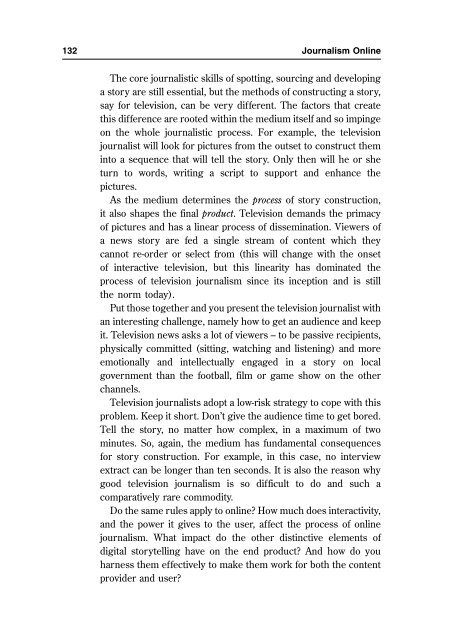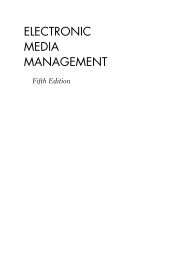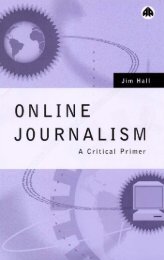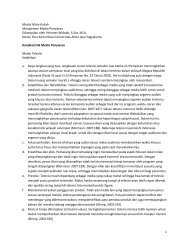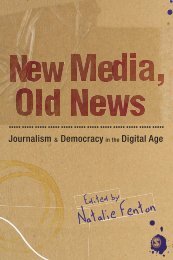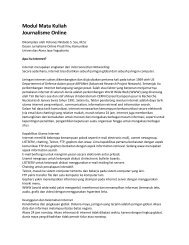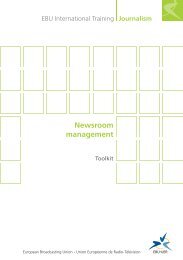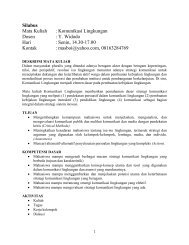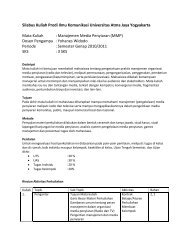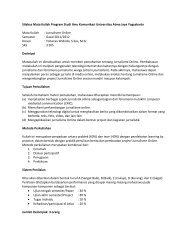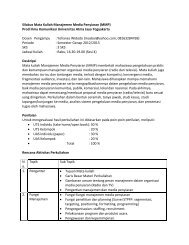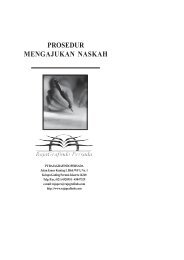1What is online journalism? - Ayo Menulis FISIP UAJY
1What is online journalism? - Ayo Menulis FISIP UAJY
1What is online journalism? - Ayo Menulis FISIP UAJY
Create successful ePaper yourself
Turn your PDF publications into a flip-book with our unique Google optimized e-Paper software.
132 Journal<strong>is</strong>m Online<br />
The core journal<strong>is</strong>tic skills of spotting, sourcing and developing<br />
a story are still essential, but the methods of constructing a story,<br />
say for telev<strong>is</strong>ion, can be very different. The factors that create<br />
th<strong>is</strong> difference are rooted within the medium itself and so impinge<br />
on the whole journal<strong>is</strong>tic process. For example, the telev<strong>is</strong>ion<br />
journal<strong>is</strong>t will look for pictures from the outset to construct them<br />
into a sequence that will tell the story. Only then will he or she<br />
turn to words, writing a script to support and enhance the<br />
pictures.<br />
As the medium determines the process of story construction,<br />
it also shapes the final product. Telev<strong>is</strong>ion demands the primacy<br />
of pictures and has a linear process of d<strong>is</strong>semination. Viewers of<br />
a news story are fed a single stream of content which they<br />
cannot re-order or select from (th<strong>is</strong> will change with the onset<br />
of interactive telev<strong>is</strong>ion, but th<strong>is</strong> linearity has dominated the<br />
process of telev<strong>is</strong>ion journal<strong>is</strong>m since its inception and <strong>is</strong> still<br />
the norm today).<br />
Put those together and you present the telev<strong>is</strong>ion journal<strong>is</strong>t with<br />
an interesting challenge, namely how to get an audience and keep<br />
it. Telev<strong>is</strong>ion news asks a lot of viewers – to be passive recipients,<br />
physically committed (sitting, watching and l<strong>is</strong>tening) and more<br />
emotionally and intellectually engaged in a story on local<br />
government than the football, film or game show on the other<br />
channels.<br />
Telev<strong>is</strong>ion journal<strong>is</strong>ts adopt a low-r<strong>is</strong>k strategy to cope with th<strong>is</strong><br />
problem. Keep it short. Don’t give the audience time to get bored.<br />
Tell the story, no matter how complex, in a maximum of two<br />
minutes. So, again, the medium has fundamental consequences<br />
for story construction. For example, in th<strong>is</strong> case, no interview<br />
extract can be longer than ten seconds. It <strong>is</strong> also the reason why<br />
good telev<strong>is</strong>ion journal<strong>is</strong>m <strong>is</strong> so difficult to do and such a<br />
comparatively rare commodity.<br />
Do the same rules apply to <strong>online</strong>? How much does interactivity,<br />
and the power it gives to the user, affect the process of <strong>online</strong><br />
journal<strong>is</strong>m. What impact do the other d<strong>is</strong>tinctive elements of<br />
digital storytelling have on the end product? And how do you<br />
harness them effectively to make them work for both the content<br />
provider and user?


